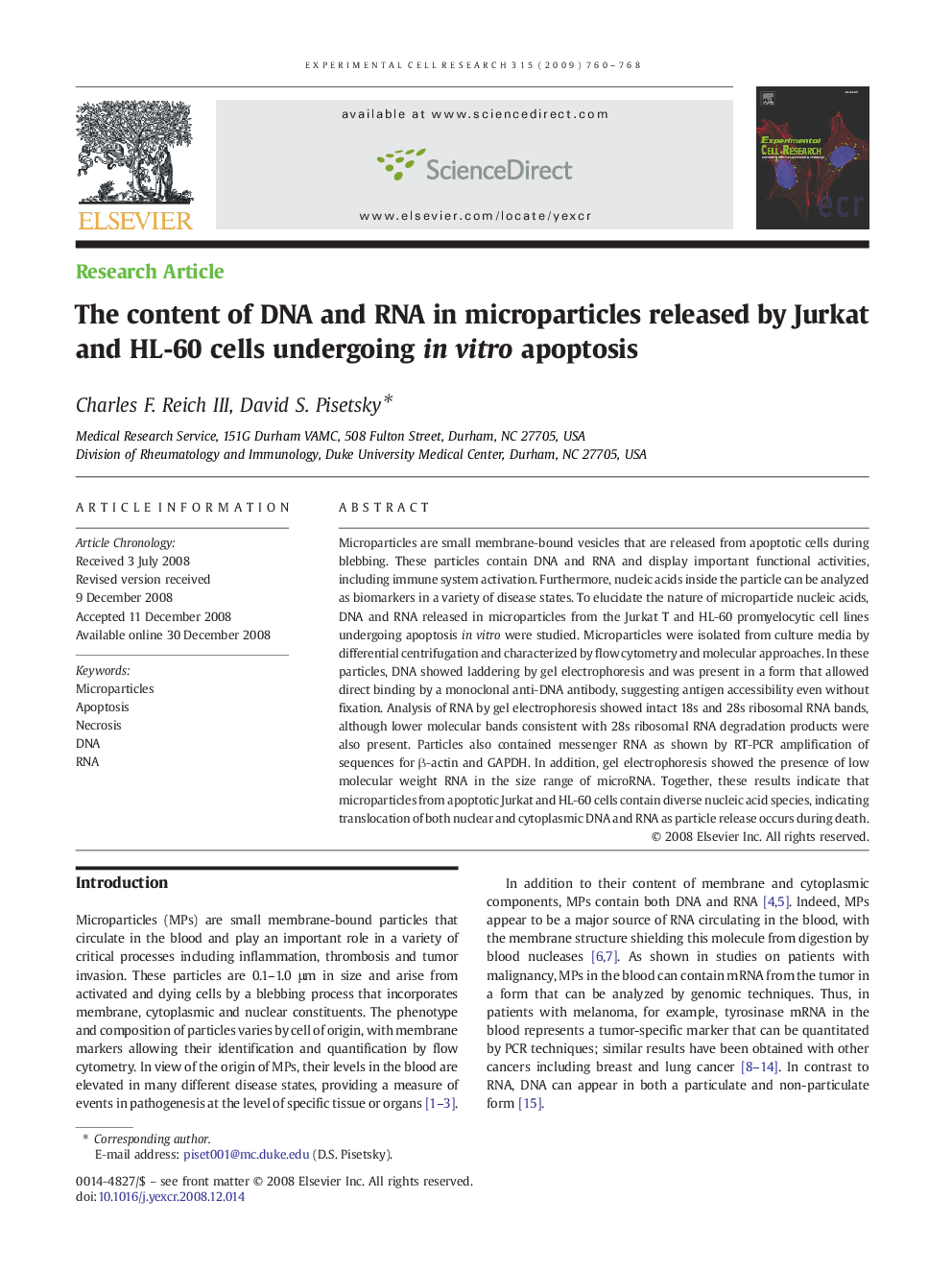| Article ID | Journal | Published Year | Pages | File Type |
|---|---|---|---|---|
| 2132660 | Experimental Cell Research | 2009 | 9 Pages |
Microparticles are small membrane-bound vesicles that are released from apoptotic cells during blebbing. These particles contain DNA and RNA and display important functional activities, including immune system activation. Furthermore, nucleic acids inside the particle can be analyzed as biomarkers in a variety of disease states. To elucidate the nature of microparticle nucleic acids, DNA and RNA released in microparticles from the Jurkat T and HL-60 promyelocytic cell lines undergoing apoptosis in vitro were studied. Microparticles were isolated from culture media by differential centrifugation and characterized by flow cytometry and molecular approaches. In these particles, DNA showed laddering by gel electrophoresis and was present in a form that allowed direct binding by a monoclonal anti-DNA antibody, suggesting antigen accessibility even without fixation. Analysis of RNA by gel electrophoresis showed intact 18s and 28s ribosomal RNA bands, although lower molecular bands consistent with 28s ribosomal RNA degradation products were also present. Particles also contained messenger RNA as shown by RT-PCR amplification of sequences for β-actin and GAPDH. In addition, gel electrophoresis showed the presence of low molecular weight RNA in the size range of microRNA. Together, these results indicate that microparticles from apoptotic Jurkat and HL-60 cells contain diverse nucleic acid species, indicating translocation of both nuclear and cytoplasmic DNA and RNA as particle release occurs during death.
